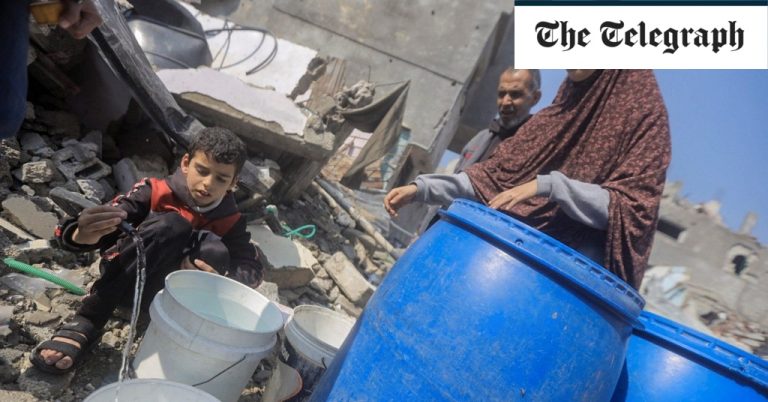The lack of hygiene facilities in Gaza’s refugee camps is of notable concern. At some shelters, there is only one toilet for each 500 to 700 persons – “a terrible recipe for the spread of waterborne diseases,” said Crickx.
The statistics speak for themselves: since the beginning of the war, there has been a 2,000 per cent increase in cases of chronic diarrhoea in children younger than five, affecting tens of thousands of kids, while cases of upper respiratory infections, scabies, lice, rashes, and chicken pox among displaced persons in Gaza have rocketed.
Lama said that when her family was displaced to Deir al-Balah, they, too, fell ill. “There were many cases of poisoning and gastrointestinal diseases all because of the water.”
Doctors are also sounding the alarm about rising antimicrobial resistance in Gaza. Resistant infections are exceedingly difficult to treat, and the microbes that cause them thrive in wartime conditions.
According to the WHO, none of Gaza’s hospitals remain fully functional. “It is very hard to work in these circumstances and limit the transmission of any infectious disease or antimicrobial [resistance],” said Krystel Moussally, a regional epidemiologist at Médecins Sans Frontières (MSF).
Experts anticipate the effects of today’s water crisis to be far-reaching, affecting public health, the environment, and politics in Gaza for generations.
“Given the extent and range of damage, highly permeable soils, and presence of the shallow coastal aquifer, the groundwater is vulnerable to contaminants,” said Linsey Cottrell, environmental policy officer at The Conflict and Environment Observatory.
Cottrell said that unplanned mass graves can also pollute groundwater. Euro-Med Monitor has recorded more than 120 mass graves recently established across the Gaza Strip. More than 27,000 people have been killed in Gaza since October 7, 2023.
Zeitoun, of the Geneva Water Hub, expects that after a cessation of hostilities, Gaza will be forced to depend on bottled water, water trucking, and piped water from neighbouring countries for years while its water and sewage systems are repaired and improved.
However, he warns that solutions to enduring infrastructural issues in Gaza hinge on its future political status. “This isn’t a typical conflict that’s going to stop, and then humanitarian aid workers come in [to] repair, rehabilitate, and build back better,” said Zeitoun. “[The future] all depends on what the political oversight of Gaza is going to look like.”
Protect yourself and your family by learning more about Global Health Security
